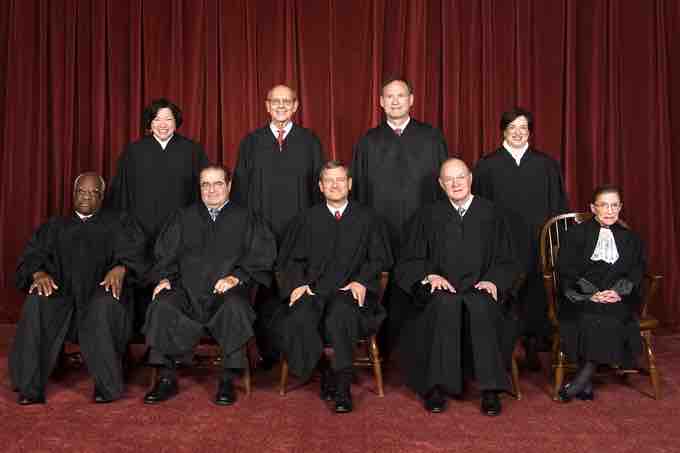Background
Federal judicial appointments must go through a confirmation process before they are approved. During this process, a committee called the Senate Judiciary Committee conducts hearings, questioning nominees to determine their suitability. At the close of confirmation hearings, the Committee votes on whether the nomination should go to the full Senate with a positive, negative, or neutral report.
In modern times, the confirmation process has attracted considerable attention from special-interest groups, many of which lobby senators to confirm or to reject a nominee depending on whether the nominee's track record aligns with the group's views.
The Committees and Confirmation Process
The Senate Judiciary Committee personally interviews nominees, a practice that is relatively recent and began in 1925. The modern practice of the Committee questioning every nominee on their judicial views began with the nomination of John Marshall Harlan II in 1955. The nomination came shortly after the Court handed down the landmark Brown v. Board of Education decision, and several Southern senators attempted to block Harlan's confirmation - hence the decision to testify.
A simple majority vote is required to confirm or to reject a nominee. Once the Committee reports out the nomination, the whole Senate considers it. Rejections are relatively uncommon; the Senate has explicitly rejected only twelve Supreme Court nominees in its history.
It is also possible for the President to withdraw a nominee's name before the actual confirmation vote occurs. This usually happens when the President feels that the nominee has little chance of being confirmed. Supreme Court nominations have caused media speculation about whether the judge leans to the left, middle, or right. One indication of the politicized selection process is how much time each nominee spends being questioned under the glare of media coverage. Before 1925, nominees were never questioned; after 1955, every nominee has been required to appear before the Senate Judiciary Committee and answer questions. The number of hours hours spent being grilled has increased from single digits (before 1980) to double digits today.

The U.S. Supreme Court
The United States Supreme Court, the highest court in the United States, in 2010. Top row (left to right): Associate Justice Sonia Sotomayor, Associate Justice Stephen G. Breyer, Associate Justice Samuel A. Alito, and Associate Justice Elena Kagan. Bottom row (left to right): Associate Justice Clarence Thomas, Associate Justice Antonin Scalia, Chief Justice John G. Roberts, Associate Justice Anthony Kennedy, and Associate Justice Ruth Bader Ginsburg.
Once the Senate confirms the nomination by an affirmative vote, the President must prepare and sign a commission and have the Seal of the United States Department of Justice affixed to the document before the new Justice can take office. It is this act of the President which officially commences the beginning of an individual Justice's tenure.